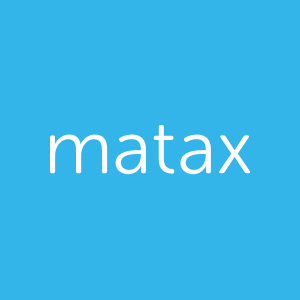Re-evaluating Your App Stack for Maximum Efficiency
In today's digital age, businesses rely on a complex ecosystem of applications to manage everything from customer interactions to internal processes. This collection of tools, known as your app stack, can be a powerful asset, boosting productivity and streamlining workflows. However, as your business grows and evolves, the apps that once served you well may become outdated or inefficient. Regularly re-evaluating your app stack is crucial for maintaining optimal performance and ensuring you have the right tools for the job.
In this blog post, we’ll delve into the importance of re-evaluating your app stack. We'll explore the benefits of a well-optimized app ecosystem, the signs that it's time for a reevaluation, and a step-by-step process to guide you.
Why Re-evaluate Your App Stack?
A well-curated app stack offers a multitude of benefits for your business:
Increased Efficiency: Streamlined workflows and seamless integrations between apps can significantly reduce wasted time and effort.
Enhanced Productivity: The right tools empower your team to complete tasks faster and with greater accuracy.
Improved Collaboration: Apps that facilitate communication and project management can foster better collaboration across departments.
Cost Savings: Replacing redundant or underutilized apps with more efficient solutions can free up valuable resources.
Data-Driven Decision Making: Business intelligence tools can provide valuable insights to guide strategic decision making.
However, as your business grows and your needs change, your app stack can become bloated and inefficient. Here are some signs that it's time for a reevaluation:
Data Silos and Disconnected Workflows: When your apps don't integrate well, information gets siloed, leading to data inconsistencies and hindering collaboration.
Redundant Functionality: You may have multiple apps performing similar tasks, creating unnecessary complexity and cost.
Underutilized Features: You're paying for features in some apps that your team doesn't use.
Security Concerns: Outdated apps or those with weak security protocols can leave your data vulnerable to breaches.
Difficulty Scaling: Your current app stack may not be able to handle the demands of a growing business.
A Step-by-Step Guide to Re-evaluating Your App Stack
Now that you understand the importance of a well-optimized app stack, let's explore a step-by-step process to guide your reevaluation:
Define Your Business Goals and Needs:
The first step is to clearly define your business goals and identify the specific needs of each department. What are you trying to achieve with your app stack? Are there any specific pain points you're looking to address?
Take Inventory of Your Existing Apps:
Create a comprehensive list of all the apps and software programs your business currently uses. For each app, consider the following:
How often is it used?
Who uses it?
What features are used most frequently?
Are there any integrations with other apps?
Evaluate Each App Based on Specific Criteria:
Develop a set of evaluation criteria to assess each app. Here are some factors to consider:
Functionality: Does the app meet your specific needs and offer the features you require?
Ease of Use: Is the app user-friendly and intuitive for your team?
Integrations: Does the app integrate seamlessly with other essential tools in your stack?
Security: Does the app offer robust security features to protect your data?
Scalability: Can the app scale to meet the future needs of your growing business?
Cost: Does the app offer good value for the price?
Research and Consider Alternatives:
Having identified any shortcomings in your app stack, explore alternative solutions. Research competitor products, read user reviews, and identify features that better align with your current needs.
Consolidate and Integrate:
Look for opportunities to consolidate redundant functionalities or eliminate underutilized apps. Explore solutions that offer a comprehensive suite of features, minimizing the overall number of apps you need.
Implement and Train Your Team:
Once you've decided on new tools, develop a plan for implementation and training. Ensure your team has the resources and support they need to adapt to new software effectively.
Monitor and Continuously Evaluate:
Re-evaluating your app stack shouldn't be a one-time event. Continuously monitor usage data and user feedback.
We know that even with a clear guide like this one, re-evaluating your app stack is a daunting task. But don’t get too anxious, at MATAX, this is just another day in the office. Want more help, give us a shout.

